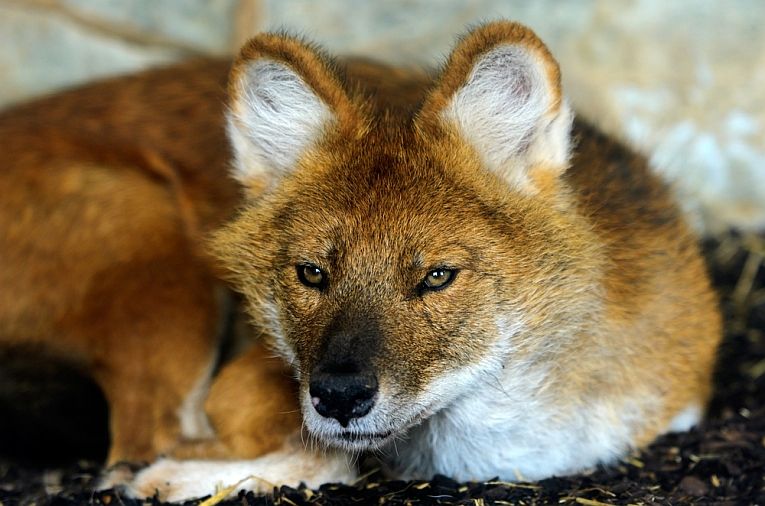”Red dog” - Dhole image; Credit: © Shutterstock
Carnivore and other guilds are a new idea for many of us, so the existence of such an interesting situation in India begs attention. This guild consists of tiger, leopard and our old friend the dhole (sometimes called the red dog.) Tropical forest exists in 4 reserves in Karnataka and Kerala provinces that were used in the study, with varying densities of both prey and these 3 predators. When the prey was at low densities, it was interesting how the predators varied their activity.
Rather than dominate certain aspects of their niches, these 3 illustrate behavioural mechanisms that allow a kind of co-occupation.
Ecology is a logical study we can use on everything from humans to bacteria. The researches reveal individual species in a different light, but when guilds
can be studied, the community in a habitat are revealed at an even deeper level. Carnivores can remain separate in their spatial orientation, but the habitat is so fragmented, we need to examine how they operate in this contemporary context. The observation of intimidation, kleptoparasitism, mortality and spatial exclusion has been common, according to the author group, headed by K. Ullas Karanth. He is the Director of the Wildlife Conservation Society: India Program, based in New York, while other members of the group hail from the University of Florida, US, the National Centre for Biological Sciences and the Centre for Wildlife Studies in India.
Less negative tactics by carnivores sharing resources include partitioning the diet, using space and time to avoid competitive encounters or adapting in terms of daily rhythms. Human interactions are obviously of great importance too as anthropogenic influence is universal, even in places where we ourselves have never been present.
Camera trapping was the obvious method of tracking the 3 species. Radio collars or marking could have provided basic information, but was neglected in favour of a non-invasive approach. 562 paired-camera trap stations were set up in Bhadra, Biligiri, Magarahole and Bandipur reserves. Computer analysis provide many tools for useful assessment of the interactions.
As expected the dholes were mainly diurnal and the 2 cats tended towards the nocturnal.. In Bhadra, however, where prey was the least common, all three chose daylight to be active. That lead to the dholes becoming more nocturnal than at the other reserves. Nagarahole and Bandipur were interesting in that leopards and tigers were able to adopt differerent temporal activity patterns,
with the leopards becoming more active in the 2 twilight periods (crepuscular.)
The highest temporal overlap was in Bhadra, where prey was at a premium. Tigers occupied very similar spaces to leopards there, while dholes and tigers were overlapping spatially the most in Giligiri. Here the leopard population was quite low and they overlapped with the species less. Nagarahole was the richest in prey and evidence for any spatial aggregation was low.
Behaviourally, the 3 avoided each other almost totally in either space or time where their populations were lowest. Fine-scale behaviour study showed how the animals avoided encounters. Computer analysis of paired species illustrated the segregation very well, especially in Nagarahole, but Badipur did not show this trend for segregation, even though prey was at high densities in both reserves.
Similar camera trap studies can be applied to other dog species such as the African painted dog, Lycaon pictus. They roam over great distances on the savanna in order to avoid their meals being stolen by lion or hyena. In Bandipur, the lack of segregation between these 3 species could be due to more open woodland and therefore greater visibility. Aggression between them has been recorded as the use of dholes as prey by both tiger and leopard; the stealing of kills by all 3; the escape of leopards from the other 2 by climbing and the killing of leopards by both tigers and dholes.
Conclusions from such novel, multiple camera studies lead to many ideas about complex interplay within any community. Large carnivores such as these affect mesopredators further down the food chain. Annual variations, too, determine who or where predators hunt and how many, for example, will hunt in a dhole pack. This snapshot
of complex animal community interaction will be invaluable as we grow to understand more and more about these threatened species in their limited habitats. They have more common soulmates in every tiny community of animals and plants. We play the winning hand every time, whether conserving or destroying, but despite that, we lose - every time.
The Proceedings of the Royal Society B publish the paper today as Spatio-temporal interactions facilitate large carnivore sympatry across a resource gradient.















